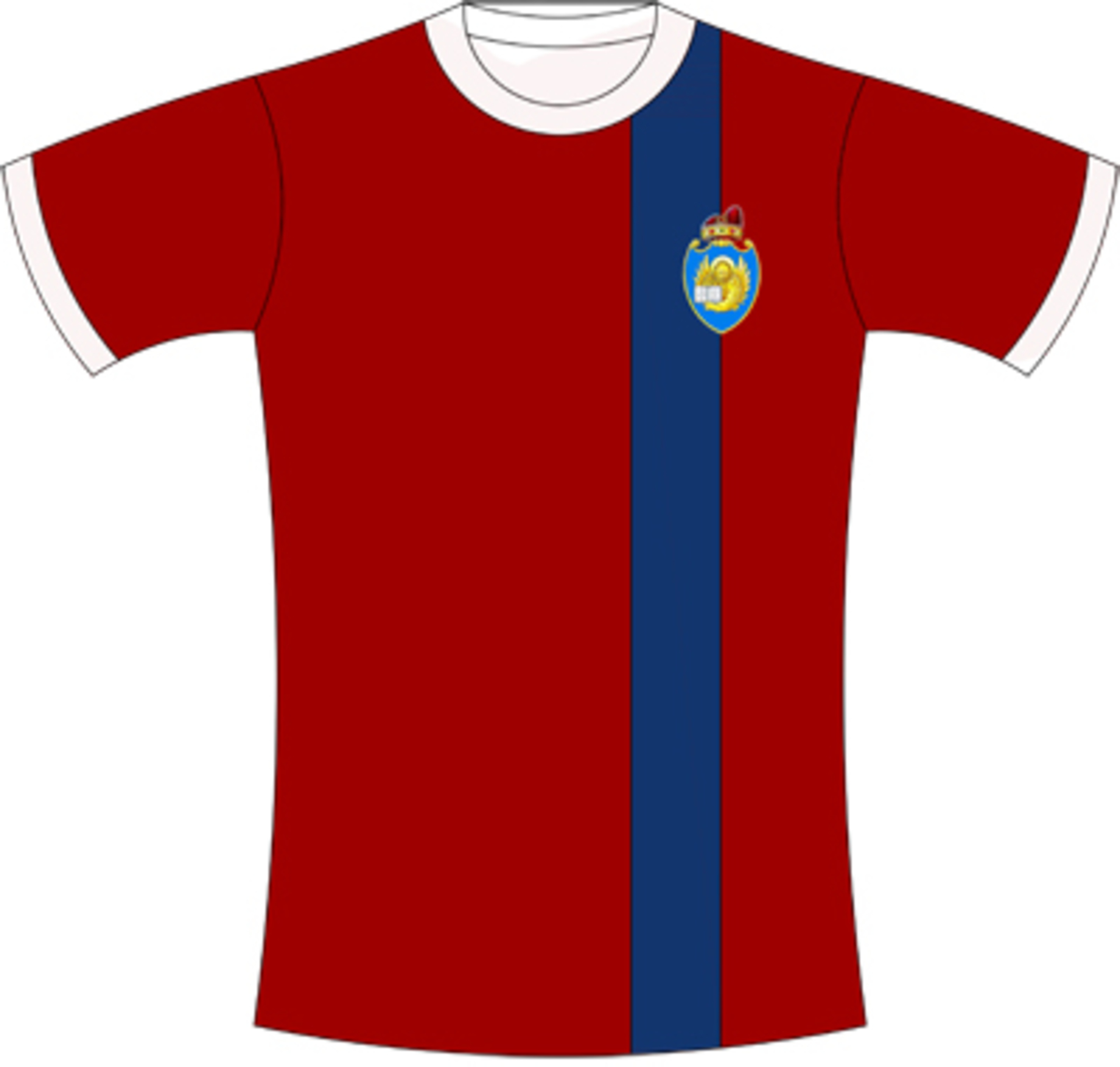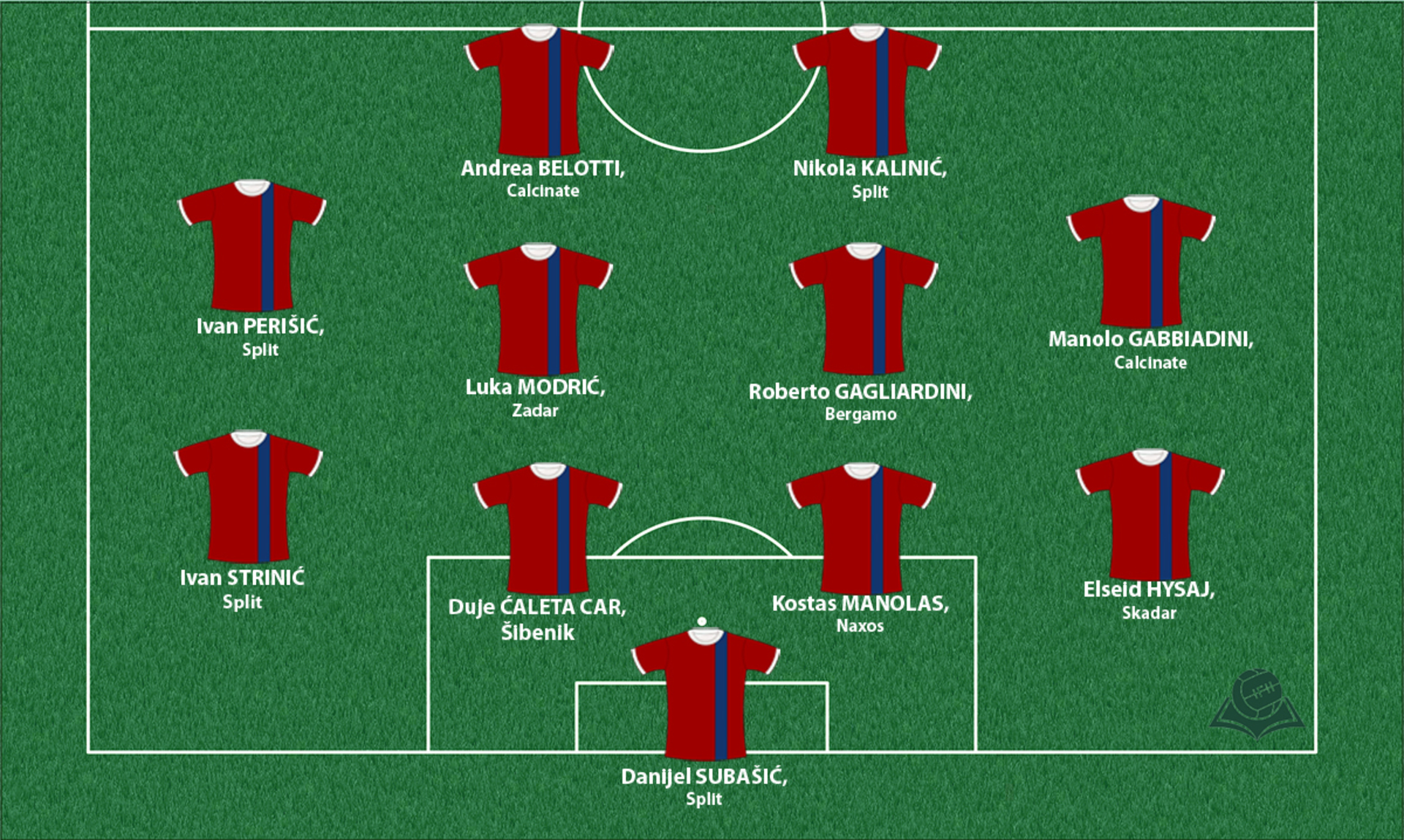Venetian Republic
The Venetian Republic was one of the strongest maritime forces in the Mediterranean between the 12th and the 15th century. It covered a disconnected territory which was strategically of key importance for the control of the seas from Venice to the Peloponnese in the south, including some isles of the eastern Mediterranean. During the 15th century, the Republic began to lose its supremacy in the Mediterranean but, on the other hand, it started to strengthen itself in the lands of Venetian hinterlands.

Coat of arms

Shirt
| Position | First name | Last name | Mjesto rođenja | Like | Dislike | |
|---|---|---|---|---|---|---|
| GK | Danijel | SUBAŠIĆ | Zadar |
70 |
5 |
|
| GK | Federico | MARCHETTI | Bassano del Grappa |
3 |
0 |
|
| GK | Lovre | KALINIĆ | Split |
37 |
5 |
|
| DC | Alessandro | BASTONI | Casalmaggiore |
3 |
1 |
|
| DC | Duje | ĆALETA CAR | Šibenik |
6 |
2 |
|
| DC | Kostas | MANOLAS | Naxos |
30 |
2 |
|
| DC | Luca | ROSSETTINI | Padova |
2 |
0 |
|
| DLC | Antonio | MILIĆ | Split |
14 |
1 |
|
| DRL | Davide | CALABRIA | Brescia |
3 |
2 |
|
| DRL | Šime | VRSALJKO | Rijeka |
54 |
7 |
|
| DR | Christian | MAGGIO | Montecchio Maggiore |
2 |
1 |
|
| DR | Elseid | HYSAY | Reç (Shkodër) |
14 |
9 |
|
| DL | Ivan | STRINIĆ | Split |
30 |
6 |
|
| DMC | Filip | BRADARIĆ | Split |
4 |
1 |
|
| DMC | Mirko | VALDIFIORI | Russi |
1 |
1 |
|
| MC | Andrea | POLI | Vittorio Veneto |
3 |
2 |
|
| MC | Andreas | SAMARIS | Patras |
13 |
3 |
|
| MC | Bryan | CRISTANTE | San Vito al Tagliamento |
2 |
1 |
|
| MC | Daniele | BASELLI | Manerbio |
2 |
1 |
|
| MC | Luka | MODRIĆ | Zadar |
90 |
8 |
|
| MC | Ricardo | MONTOLIVO | Caravaggio |
3 |
2 |
|
| MC | Roberto | GAGLIARDINI | Bergamo |
3 |
2 |
|
| AMRLC | Riccardo | SAPONARA | Forli |
2 |
1 |
|
| AMRL | Ivan | PERIŠIĆ | Split |
80 |
5 |
|
| AMRL | Nikola | VLAŠIĆ | Split |
41 |
3 |
|
| FRLC | Ante | REBIĆ | Split |
41 |
1 |
|
| FRLC | Manolo | GABBIADINI | Calcinate |
4 |
1 |
|
| FRLC | Marko | LIVAJA | Split |
12 |
1 |
|
| FRLC | Nikos | KARELIS | Heraklion |
3 |
1 |
|
| FC | Andrea | BELOTTI | Calcinate |
5 |
3 |
|
| FC | Ivan | SANTINI | Zadar |
3 |
0 |
|
| FC | Nikola | KALINIĆ | Split |
48 |
11 |
|
| FC | Stipe | PERICA | Zadar |
14 |
2 |
(Today: northern parts of Italy, coastal Croatia, coastal Albania, Greek islands)
Although Venice nominally recognized the rule of Byzantium from the beginning of the 9th century, due to the weakness of the Empire they would act independently in the following centuries, and various maritime trade and traffic privileges will enable its rise, so thatin the 12th century they became the leading Mediterranean power at sea. In addition to the complete freedom of trade and control of European import of spices from the Orient, during the half-century of the existence of the Latin Empire, it had gained the fertile areas, coasts, best ports, as well as the most important strategic points in the Eastern Mediterranean, so it managed to establish rule over the long sea route from Venice to Constantinople.
Consequently, the Venetian Republic, or the Republic of St. Mark (as it was called due to their claims to possess the posthumous remains of the Evangelist St. Mark), with its disconnected land territory which was strategically of key importance for the control of the seas, spread from Venice in the north, all the way to the Peloponnese in the south, including the islands of the Eastern Mediterranean. The state vas organized as a republic, with the power divided between several institutions in which men of the Church were excluded from public affairs, and everything was organized in such a way that the power would not slip into the hands of the privileged merchant class, which was united by a close mutual solidarity. Venice was engaged in a century-long struggle for dominance in the Eastern Mediterranean against Genoa, which differed from them greatly, seen as how the Genovese military campaigns and trade convoys were in private hands so, as true adventurers, they did not hesitate to enter the service of whoever was willing to pay them. One of the most notable examples of this was Christopher Columbus. During the 15th century conquests of its hinterlands (Padua, Brescia, Verona, etc.), Venice changed its identity, and became an important power in the continental Italian politics, as opposed to Mediterranean ones.
Sources
- Charles DIEHL, Mletačka republika, Zagreb, 2006.
- William F. ENGDAHL, Mitovi, laži i ratovi za naftu, Zagreb, 2012.
- Felipe FERNANDEZ-ARMESTO, Narodi Europe, Zagreb, 1997.
- Giuliano PROCACCI, Povijest Talijana, Zagreb, 1996.
- Cat of Arms: https://exarandorum.wordpress.com/2013/04/24/coat-of-arms-of-the-republic-of-venice/
